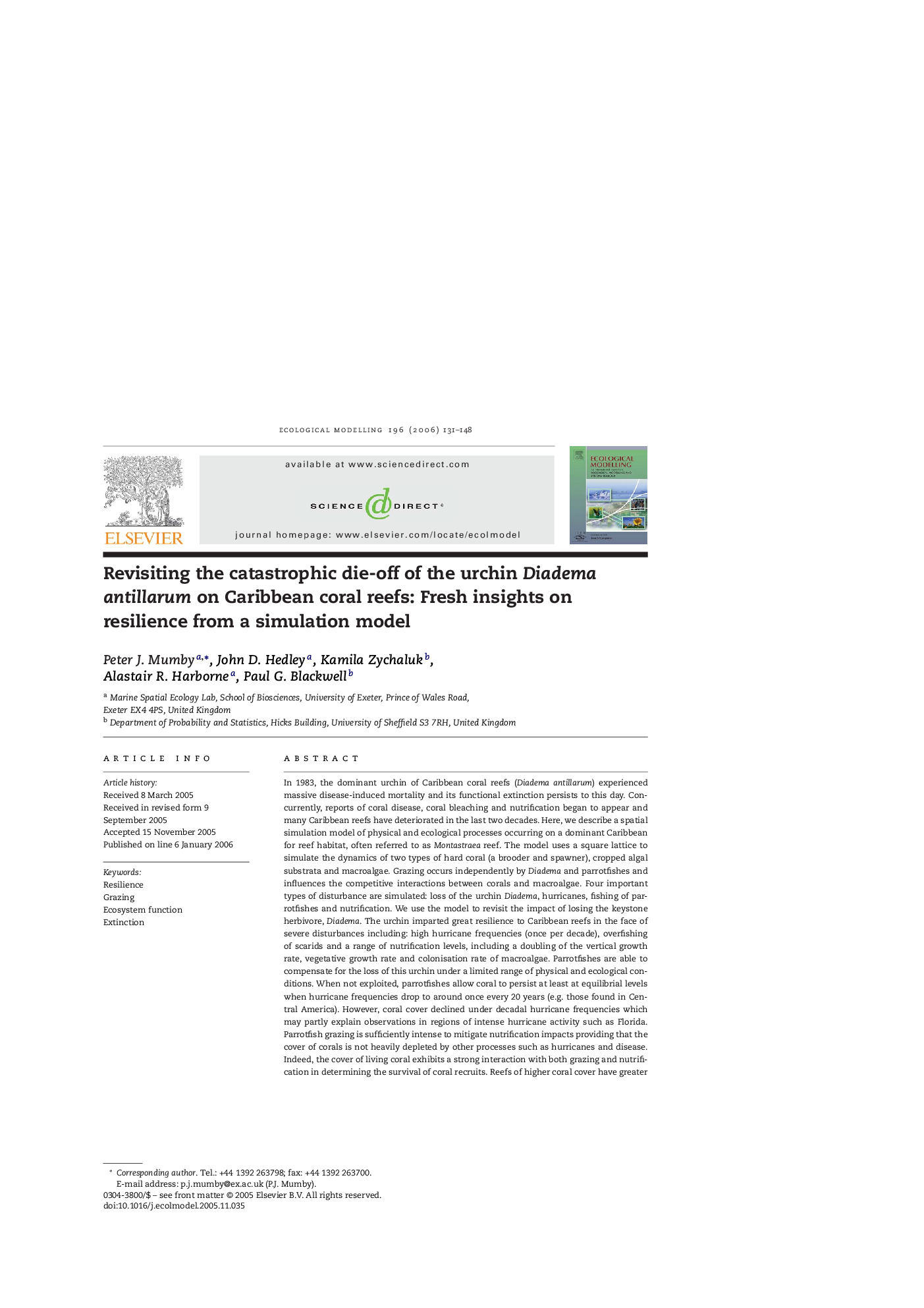| Article ID | Journal | Published Year | Pages | File Type |
|---|---|---|---|---|
| 4379037 | Ecological Modelling | 2006 | 18 Pages |
In 1983, the dominant urchin of Caribbean coral reefs (Diadema antillarum) experienced massive disease-induced mortality and its functional extinction persists to this day. Concurrently, reports of coral disease, coral bleaching and nutrification began to appear and many Caribbean reefs have deteriorated in the last two decades. Here, we describe a spatial simulation model of physical and ecological processes occurring on a dominant Caribbean for reef habitat, often referred to as Montastraea reef. The model uses a square lattice to simulate the dynamics of two types of hard coral (a brooder and spawner), cropped algal substrata and macroalgae. Grazing occurs independently by Diadema and parrotfishes and influences the competitive interactions between corals and macroalgae. Four important types of disturbance are simulated: loss of the urchin Diadema, hurricanes, fishing of parrotfishes and nutrification. We use the model to revisit the impact of losing the keystone herbivore, Diadema. The urchin imparted great resilience to Caribbean reefs in the face of severe disturbances including: high hurricane frequencies (once per decade), overfishing of scarids and a range of nutrification levels, including a doubling of the vertical growth rate, vegetative growth rate and colonisation rate of macroalgae. Parrotfishes are able to compensate for the loss of this urchin under a limited range of physical and ecological conditions. When not exploited, parrotfishes allow coral to persist at least at equilibrial levels when hurricane frequencies drop to around once every 20 years (e.g. those found in Central America). However, coral cover declined under decadal hurricane frequencies which may partly explain observations in regions of intense hurricane activity such as Florida. Parrotfish grazing is sufficiently intense to mitigate nutrification impacts providing that the cover of corals is not heavily depleted by other processes such as hurricanes and disease. Indeed, the cover of living coral exhibits a strong interaction with both grazing and nutrification in determining the survival of coral recruits. Reefs of higher coral cover have greater resilience for a given level of nutrification or grazing and therefore management efforts that arrest declines in coral cover will build greater natural resilience in the system. The model provides a strong case for conserving parrotfishes because reef decline is predicted to be inevitable when urchins are scarce and fishing of grazers is intense (e.g. to the levels seen in Jamaica). Lastly, the model provides a new perspective on the bottom-up versus top-down debate of macroalgal blooms in Jamaica. Nutrification impacts are predicted to be most important when urchins are scarce and parrotfishes are relatively lightly exploited. Therefore, a full understanding of the impact of nutrification will only occur if no-take marine reserves permit scarid biomass to reach unexploited levels. Under these conditions, coral cover is only predicted to increase if nutrification levels are low.
